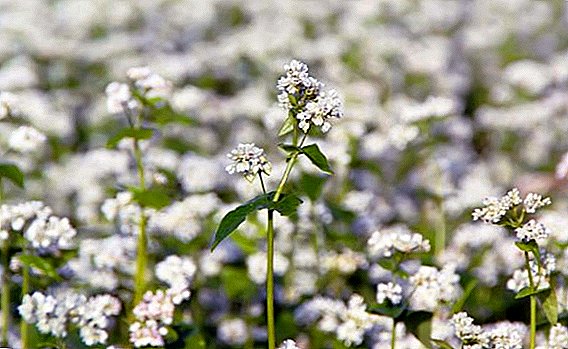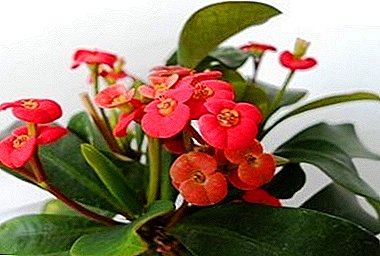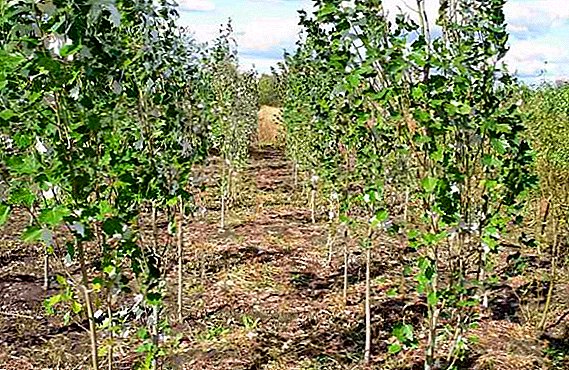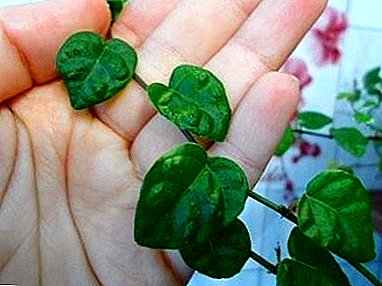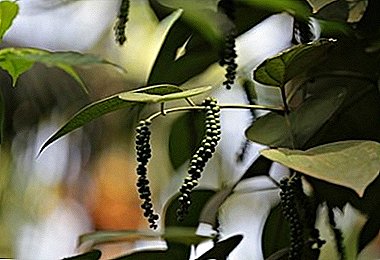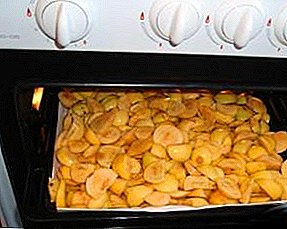
Many amateur flower growers dream of growing tropical jungle plants in their home, but they fear that the climate in our homes will not be suitable for whimsical pets.
Unsuccessful experience can disappoint and frighten.
But this will not happen if you choose “Palisotu” - a perennial herb that is unpretentious in caring.
General description of the plant
In the wild, "Palisot" grows in the mountainous regions of the tropical zone of West Africa. In nature, there are more than 25 types of "Palisots". The genus got its name in honor of the discoverer - French botanist Joseph Palisot de Bovoie, who brought a copy of the plant to Paris from an African expedition in the late 18th century.
Reference! Latin name. Genus - "Palisota", family "Commeline" (Commelinaceae).
Appearance
This plant has almost no stem or a very short stem, from which grows a sprawling rosette of lush leaves on long petioles.
Thick petioles with grooves at the base are rounded in the form of tubes, from which the next tier of leaves continues to grow. The leaf plates themselves are elongated, about 10-40 cm wide, up to 30-50, sometimes up to 80 cm long.
The leaves are glossy, shiny, their color depends on the type. It blooms in medium-sized pinkish or white flowers, the inflorescence of which resembles a panicle. After flowering (in winter), very decorative dense balls of cone-shaped fruits are formed. Most often the fruits are bright red, but there are varieties in which the berries are white or blue.
Views from the photo
Palisota bracteosa:
The darkest leaves are in “Prytsvetnikovaya Palisots”, but the variety of this species is especially popular, with uneven light stripes spreading on a dark green background with a herringbone.
"Palisota barteri":
The “Barter’s Palisots” are oblong, somewhat smaller than those of other species, light green with an even lighter core, covered with dense white fuzz.
"Palisota mannii":
The leaves are "Manna Palisso" with wavy edges, and light streaks are very pronounced, especially on the underside of the sheet.
Attention! If it is important for you to accurately determine the appearance of your “Palisots”, first of all, look at the leaves.
Home care
Actions after purchase
 “Palisotu”, which you purchased at the store, was grown in greenhouse conditions, so the best time to purchase it is from late spring to late fall, that is, in the active life cycle.
“Palisotu”, which you purchased at the store, was grown in greenhouse conditions, so the best time to purchase it is from late spring to late fall, that is, in the active life cycle.
She has a couple of weeks of acclimatization at home.
At this time, protect the flower from bright sunlight and drafts, water it too much and try not to move it.
Like any other flower, after purchase, “Palisotu” is recommended to be transplanted from the store to permanent soil. With “Palisota”, you need to be especially careful, since it has a superficial root system, which can be easily damaged by careless transplantation.
You will need:
- wide tub or container - “Palisot” is better to plant in a shallow container;
- ready soil mixture for indoor plants (you can cook it yourself, mixing in equal parts turf soil, peat, humus and river sand);
- material for drainage (expanded clay, pieces of foam).
Transplanting process
Place a small layer of drainage material at the bottom of the container - a necessary condition for water not to stand at the roots. Fill the container with two-thirds soil mixture.
Carefully remove the plant from the transporting pot and place it in a container without brushing off the roots. Do not bury the rosette. Pour the roots, easy tamp. Carefully pour.
Lighting
 "Palisote" need not very bright light, eliminating direct sunlight, so it is best to place your Tropican on the west or east side of the house.
"Palisote" need not very bright light, eliminating direct sunlight, so it is best to place your Tropican on the west or east side of the house.
In the southern rooms it can be grown up to 2 m from a well-lit window. Keep in mind that young plants do not grow very intensively, and adults for a season can increase the outlet diameter by 10-15 cm.
Watering
It is more convenient to use a watering can with a thin spout to prevent water from entering the middle of the outlet. All months except the winter months - abundant moisture, frequent spraying.
Winter watering limit, but to prevent the earthen coma from drying out. Spraying to reduce, as long as the air from the radiators did not get on the "Palisot."
If you keep the flower on a pallet with constantly moist clay, it will maintain the necessary moisture even better than frequent sprays.
Temperature
In the summer - your usual room (range 18-25˚), in the period of cold weather it is desirable to reduce to 16-18˚. To do this, move the plant close to the glass and separate it from the warm air of the room and especially from the batteries with a transparent film.
Top dressing and pruning
In the season of active growth - liquid irrigation with complex fertilizer 1-2 times per month.
Pruning is needed only if you plan to multiply the "Palisot": when pruning the parent outlet, the plant will give offspring.
Breeding
 Child offspring. Carefully separate the child offspring, put it into the water before the formation of the roots, then plant in a separate pot.
Child offspring. Carefully separate the child offspring, put it into the water before the formation of the roots, then plant in a separate pot.
The division of the bush. When transplanting overgrown bush can be divided and spread. Remember, often it is impossible to transplant "Palisot"!
Seeds propagate "Palisot" less, because you need to be patient.
Spread the seeds in shallow containers with soil mixture (2 parts of peat and leaf soil, one part of sod and coarse sand), cover them with soil and moisten with a spray bottle. When the seeds have sprouted, pick pick into pots with a diameter of about 7 cm.
Diseases and pests
The tips of the leaves dry up
Too dry air: you need to spray more often, you can use a tray with wet clay or moss. During the heating season, do not keep the warm air from the batteries in the stream. Another possible reason - too bright lighting.
Sad drooping leaves
Insufficient watering. Check the earthen room, if it is too dry, immerse the plant pot in water for a few hours to soak it, and then water the plant as needed.
The most important enemies of "Palisots":
overflow;
dry air;
too bright lighting.
Pests
 “Palisot” is resistant to damage by most pests., but if you notice a spider mite (a white spider web between a leaf and a stem) or mealworms (their colonies are small cotton-like fluff on the leaves), treatment with a systemic insecticide will quickly correct the situation.
“Palisot” is resistant to damage by most pests., but if you notice a spider mite (a white spider web between a leaf and a stem) or mealworms (their colonies are small cotton-like fluff on the leaves), treatment with a systemic insecticide will quickly correct the situation.
The leaves of the plant contain calcium oxalate, so try to keep Palisota inaccessible to pets and small children: swallowed leaves can cause inflammation of the internal organs.
As you can see, with the quite simple care of “Palisot”, an unpretentious tropical guest, will invariably delight you with beautiful leaves and bright decorative fruits.


